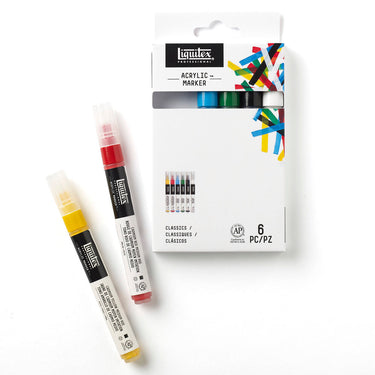There are so many specialized terms in the world of fine art - it's like a language of its own. You don’t need to understand them all, but it’s useful to know. Here are a few of the main ones explained.
SERIES
The biggest factor in the cost of artists' color is the pigment. Pigments come from a variety of different sources and have a different price according to their rarity, processing and milling costs. We therefore group our different Professional colors into a 'series' pricing structure, ie Series 1, Series 2, according to how much each one takes to make. Series 1 colors, such as Yellow Ochre, contain the most inexpensive pigments and will be the cheapest for you to buy, while Series 4 and 5 color contain the most expensive pigments. Cerulean Blue is always an expensive paint to produce so will have a high series number and cost. The series is not related to quality, purely the making costs. For our Basics paint range we have kept to a single pricing structure to make the buying process easier.
SINGLE PIGMENT COLORS
Some colors contain one pigment, other a mix of two, three or four. A single pigment (or pure) color gives the best clear color purity. Mixing two single pigments gives the cleanest mixed colors, as it is just these two pigments combining rather than multiples. For example, when you mix single pigment colors Cadmium Red Light and Cerulean Blue, you’re only mixing two colors. There’s nothing else to muddy your paint. However, if you use multi-pigment colors, you are often mixing as many as six colors, since each color is made up of three pigments each. The more pigments that are being mixed together, the faster your color will turn brown and muddy. Examples of single pigments usually include cadmiums, cobalts, quinacridone and phthalocyanine colors - you'll see the exact pigments listed on all our packaging.
PRE-MIXED COLORS
These give you the benefit of pre-mixed, “custom” colors. Mixed pigment colors are brighter than you can mix in the studio and guarantee consistent results each time. Our muted collection colors are perfect examples of new pre-mixed multi-pigment colors that are hard to achieve yourself.
OPACITY/TRANSPARENCY
Each pigment has its own personality and one of the key characteristics for any artist is how transparent it is. To help you choose, we communicate this clearly on our packaging so you can select a good color for clear glazes, or opaque colors for covering dark backgrounds. We group them into three categories:
- Opaque - these colors do not allow light to pass through the color layer and offer the best coverage or hiding power
- Semi-opaque - these allow for some light to pass through the color layer and sit between opaque and transparent colors
- Transparent - these colors offer the least coverage and allow light to pass through the color layer to the surface below. They are perfect for glazing and watercolor effects
LIGHTFASTNESS
How long will it resist fading? Each pigment is rated on scale by the American Society for Testing & Materials (ASTM). Liquitex paints are all rated ASTM I (excellent) or II (very good) and considered permanent and lightfast for 50-100+ years in gallery conditions. Our metallic and fluorescent colors are naturally less lightfast.
HUE COLORS
A color that has hue in its title is one that recreates another color for some reason. For example, a cadmium hue will be a paint that looks like cadmium but doesn't actually contain cadmium, just a blend of other pigments. Hues are useful when you're on a budget as they are usually in a lower series, and they can be recreations of colors that are now deemed unsafe, too expensive or fugitive.
AP SEAL / CP SEAL
Our colors are independently safety tested by the Art and Creative Materials Institute (ACMI) at Duke University, USA who issue two certifications which you you will see on our packaging - the Approved Product (AP) Seal and Cautionary Labeling (CL) Seal. The AP Seal appears on the majority of our colors and shows they are safe and have been certified in a toxicological evaluation by a medical expert to contain no materials in sufficient quantities to be toxic or injurious to humans, or to cause acute or chronic health problems. The CL Seal appears on our Spray Paint and identifies products that are certified to be properly labeled in a program of toxicological evaluation by a medical expert for any known health risks and with information on the safe and proper use of these materials.
THE ACMI
Founded in 1940, the Art and Creative Materials Institute, Inc. (ACMI) is an international association of over 200 art, craft and creative material manufacturers. Based at Duke University’s Division of Occupational and Environmental Medicine in North Carolina, the organization aims to promote safety in the creative products field through its certification program. The ACMI's toxicology team has over 30 years' experience evaluating more than 60,000 art material formulations for members, such as ourselves. Members can ask the ACMI's toxicology team to test and classify new products, in accordance with federal and state laws. The organization also has a Toxicological Advisory Board made up of leading experts who review general toxicology issues, the criteria used by ACMI’s toxicologists and make recommendations to the ACMI.
PROPOSITION 65
This is the common name for California’s Safe Drinking Water and Toxic Enforcement Act of 1986, which is intended to prevent anyone from discharging materials that are known to cause cancer or reproductive toxicity, and that could contaminate drinking water. After consulting with the Art and Creative Materials Institute, we know that our products are below the levels of risk as defined by Proposition 65. However, it was decided that any product containing any element considered hazardous under Proposition 65 must be labeled accordingly. As a result, artists’ colors containing cadmium and lead are required to have special labeling. Therefore you will find warning messages on our cadmium-containing colors reading: DO NOT SPRAY APPLY. This product contains cadmium, a chemical known to the State of California to cause cancer by means of inhalation.
FUGITIVE
A fugitive color is a pigment that, when exposed to certain environmental conditions such as sunlight, humidity, temperature or even pollution, is less permanent.
ACRYLIC SKINS
Also called acrylic sheets, this is a term to describe dried acrylic that has been poured onto a smooth surface and then peeled off. It's an easy technique and the skins can be used in sculptural, 3D and mixed media settings, suspended, affixed, wrapped or layered as you like.
MASSTONE
The color straight from the tube – rich and concentrated.
UNDERTONE
The color applied thinly or diluted - generally more transparent.
TINT
When a color is mixed with white.
SHADE
When a color is mixed with black.




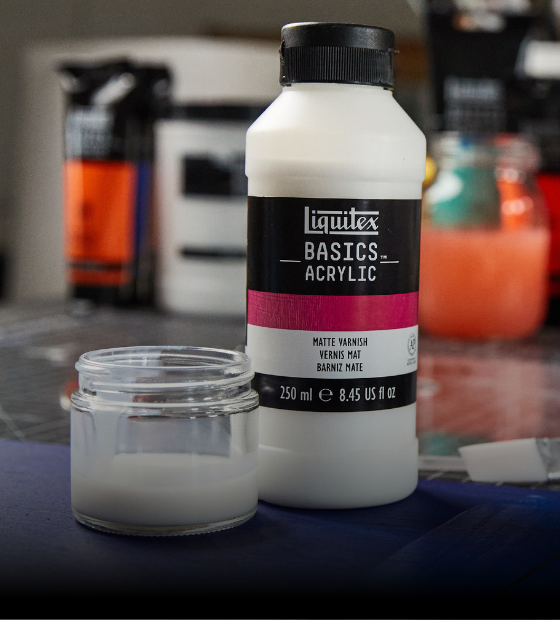












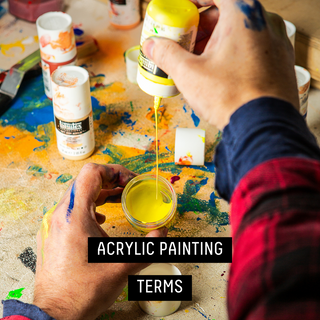
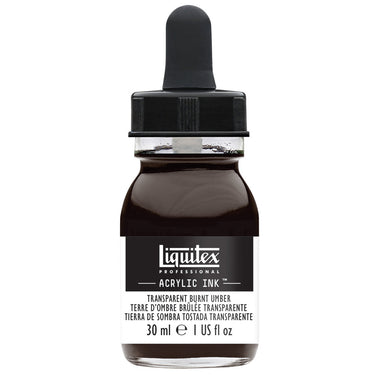
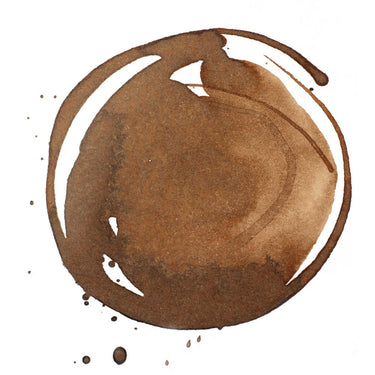

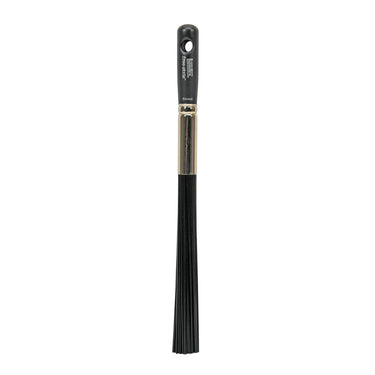






![LQX ACRYLIC MARKER SET 6X 2-4MM CLASSICS [CONTENTS] 887452001225](http://uk.liquitex.com/cdn/shop/files/68762_4855e6eb-82d5-4a11-a736-1f41ab15882e_375x375_crop_center.jpg?v=1709305272)
